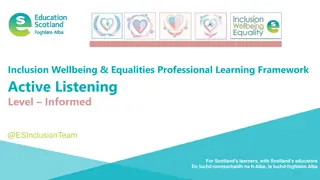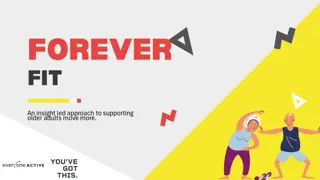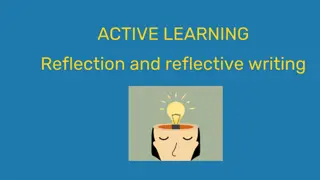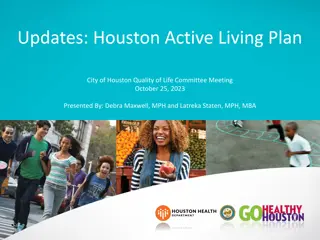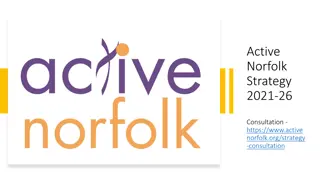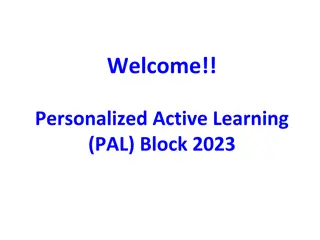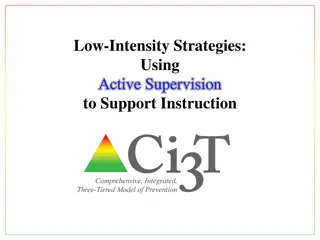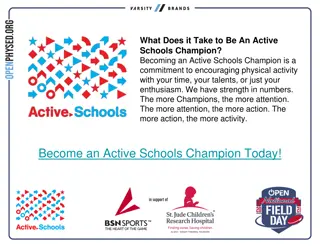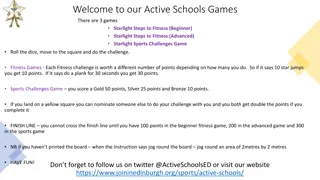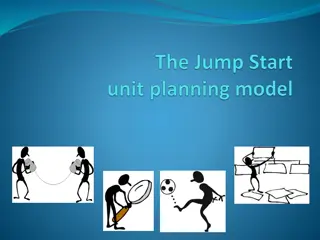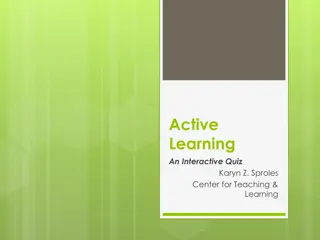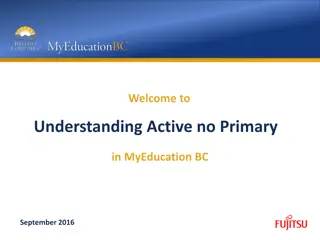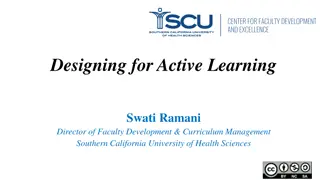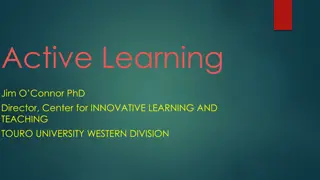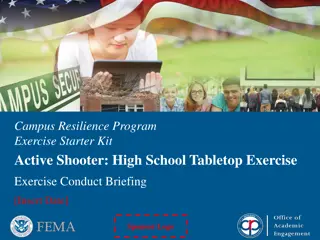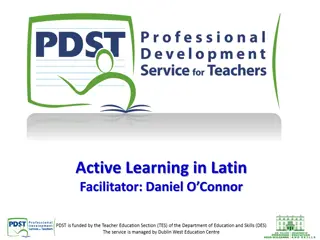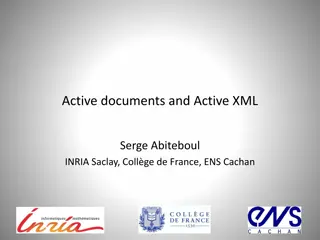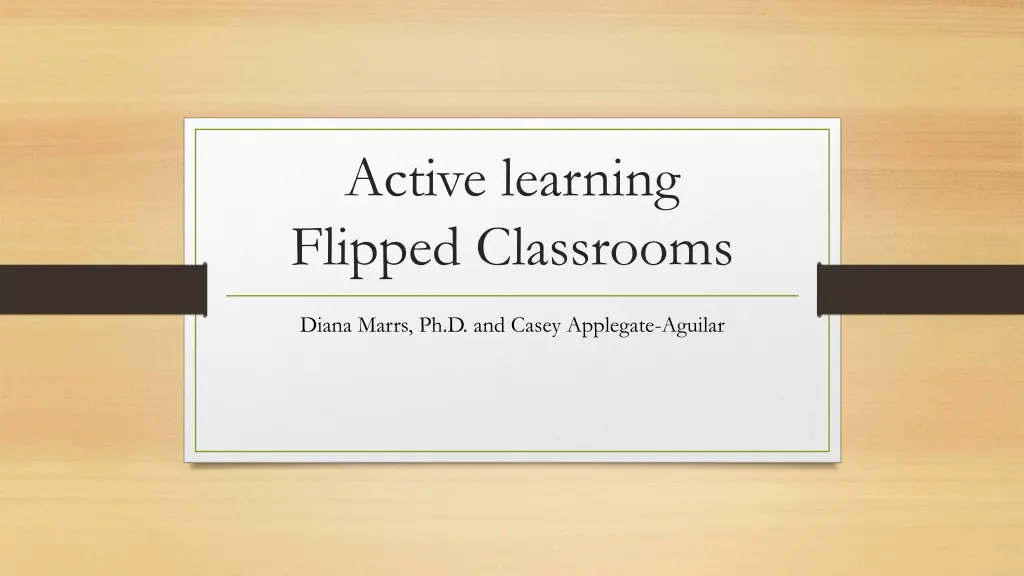
Enhancing Learning Through Active Strategies
Discover the benefits of active learning in flipped classrooms, including increased student engagement, skill development, and immediate feedback. Overcome obstacles and secondary risks to implement active strategies effectively.
Download Presentation

Please find below an Image/Link to download the presentation.
The content on the website is provided AS IS for your information and personal use only. It may not be sold, licensed, or shared on other websites without obtaining consent from the author. If you encounter any issues during the download, it is possible that the publisher has removed the file from their server.
You are allowed to download the files provided on this website for personal or commercial use, subject to the condition that they are used lawfully. All files are the property of their respective owners.
The content on the website is provided AS IS for your information and personal use only. It may not be sold, licensed, or shared on other websites without obtaining consent from the author.
E N D
Presentation Transcript
Active learning Flipped Classrooms Diana Marrs, Ph.D. and Casey Applegate-Aguilar
Active learning snapshot Students do more than listen Students are engaged in activities (reading, discussing, writing) Less emphasis on information transfer, more on developing skills Students can receive immediate feedback and support through homework that is now classwork Students use more higher order thinking
Why do active learning When I just hear it, I forget. When I hear and see it, I remember a little. When I hear, see, and ask questions about it or discuss it, I begin to understand. When I hear, see, discuss, and do it, it allows me to acquire knowledge and skill. When I teach it to another, I start to master the topic. (adapted from Confucius)
Expected versus actual grades in three AL classes 90 80 70 ALCs have an independent and statistically significant positive impact on student learning as measured by grades (Brooks, 2011) 60 50 40 30 20 10 0 PSTL 1131 BIOL 1003 FSoS Expected Actual Column1
Obstacles You cannot cover as much course content in the time available Devising active learning strategies takes more pre-class preparation Large class sizes prevents implementation of active learning strategies Most instructors think of themselves as good lecturers There is a lack of materials to support active learning Students resist non-lecture approaches
Secondary risks Students will not participate, will not learn enough, will not use higher order skills Faculty feel less in control, less confident, may feel they don t have the skills
Activate prior learning Write a brief essay what they remember and understand Interview each other TPS (think, pair, share) Create graphic organizer (concept map, fill in table, etc) (handout)
Easy active learning Short writes (summarize lecture, reading, write what you don t understand, journal entry) Clicker or thumbs up/down responses Complete surveys, questionnaires Formative quizzes (low stakes) TPS Brainstorming Groups develop an outline of the lecture Structured group discussions (specific questions provided)
Extended Active learning strategies Individual/group presentations Groups develop applications related to lecture content Groups write test questions Students analyze problem, poem, art, etc Students evaluate each others work Role play illustrating concept Enhanced lecture (mini lecture/activity/mini lecture/activity) (Pg 8-9 of handout), then pg. 13-16)
Sample - science Students watch recorded lecture outside of class Students read assigned passages. Students do some kind of Pre-class activity (quiz, discussion board, dropbox) In class, instructor holds class discussion and Student groups of three work collaboratively on multi-part problem sets
Sample - humanities Students do the reading, get supplemental info online Students do a pre-class activity (quiz) Each group gets a different question / text set Groups answer and prepare a presentation to the rest of class
Flipped classroom The flipped classroom is a pedagogical model in which the typical lecture and homework elements of a course are reversed. Short video lectures are viewed by students at home before the class session, while in-class time is devoted to exercises, projects, or discussions. Sample: CS 135
Keys to success Pre-class submissions Low stakes quiz Mini-lecture / check for prior knowledge Bridge between pre-class and in-class Discussion points Review posts Real-life examples / case studies Students develop presentations based on pre-class work and then teach to class Students create index cards and bring to class / find others with same concepts / create concept map and share with class Student Buy-in better grades on graded work. Completion of homework in class, only Prep outside

